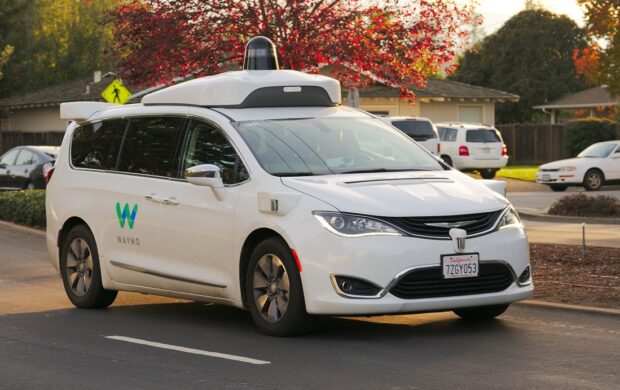Fifth-generation wireless – better known as 5G – promises anytime, anywhere connectivity that works 20 times faster than the previous generation, opening the door to a wide variety of new services and potential solutions, and ushering in the Fourth Industrial Revolution. Could it even help fight climate change? Contrary to concerns about the carbon footprint of the ICT industry, some argue that 5G could help the sector reduce CO2 emissions by 1.5 gigatonnes by 2030.
What does 5G mean for a sustainable future? There may be potential for 5G to drive the development of a lower carbon and more sustainable economy. However, the innovations that come with 5G are not primarily focused on sustainable development: how can we ensure they help, rather than hinder?
Entering a 5G World
This new form of wireless access previously inaccessible high-frequency millimeter radio waves, between 30 and 300 Gigahertz – and that is the real gamechanger. Once developed, all devices that run on the 5G NR (new radio) standard will no longer need to be connected to wifi hotspots, introducing an era of constant connectivity, as well as tremendous speed increases.
What will this look like in practice? OneWeb’s introduction of a satellite-enabled global internet could include the entire population in this hyper-connected future. The positives of this are vast: the areas that currently have patchy or no internet access at all are commonly areas in poverty. Internet access provides a resource that will allow these areas to improve connectivity with emergency services, gender equality, telemedicine, and education. The democratisation of access to information that the internet has provided has spread knowledge equality.
In order for this technology to develop, new infrastructure needs to be put in place. Higher frequencies have greater difficulty with object penetration, and therefore operators need to build new macro sites or wireless base stations. This will require huge investment and potentially meet resistance in residential areas where construction will disrupt the peace and the stations will change the overall aesthetic of neighbourhoods.
Energy use is another challenge. Although efficiency through 5G innovations could reduce the energy demand, additional energy will be needed (at least initially) to support the massive amounts of data that the Fourth Industrial Revolution is set to rely on. It is critical that we can power this upsurge in demand renewably. Will the efficiency gains be able to outweigh the extra draw on energy supplies?
The Fourth Industrial Revolution
The dramatic efficiency gains anticipated relate to the expansion of the Internet of Things (IoT). Smart, connected systems will be able to only use the power and resources that they need. This, along with the ability to sense when maintenance is needed, can significantly reduce the resources required in nearly every industry, including manufacturing, logistics, public transport systems, and distribution. Additionally, there will be an emergence of products and services that we haven’t yet imagined.
A key 5G innovation is the speed in which it will increase the development of automated vehicles. 5G will improve automation in cars, as faster C-V2X (connected vehicle to everything) communications allows connection with the traffic around them. Cars with this technology will be able to adapt to weather conditions, accidents and approaching obstacles in a way that humans can’t. With 5G, this decision-making speed will theoretically be fast enough to make significant improvements in road safety.
Automated road transport will also affect public health beyond road safety. It is hoped the technology will advance efficient electric vehicles and see fewer people owning their own cars. The resulting reduction of Co2 emissions could help prevent pollution-related illnesses, such as lung disease, as well as its further impacts on child brain development and dementia.
The 5G diet
One of the greatest concerns facing our future is food scarcity. The UN Food and Agriculture Organization predicts that in order to provide for the world’s rapidly rising population, we will need to produce 70% more food in 2050 than in 2009. Could 5G technology provide solutions to help us tackle this?
The agriculture industry is becoming increasingly automated, however, the current systems could be improved dramatically with advanced connectivity. 5G connected sensors allocated to monitor crops can assess the application of fertilizers and pesticides, irrigation methods, and autonomous tractors that sow seeds, in order to optimise farming and produce a greater yield.
The same goes for the livestock industry: connecting cows to 5G devices can accurately and speedily communicate animals’ health and behaviour. This has the potential to give early warning of illness or pregnancy and avoid unnecessary deaths.
The flipside is that an increase in automation will reduce the need for manual labour. The term ‘Just Transition’ – ensuring those reliant on emissions-heavy, unsustainable industries for their livelihoods aren’t left behind – is just as pertinent to agriculture as to the energy industry. Those thinking seriously about automation and precision agriculture must ensure job security by skilling up farming employees to enter into green jobs that operate this technology.
Tech Giants
The increased connectivity into our lives has seen a rise in hyper-consumerism, online addiction and extreme corporate centralisation that have lead to mental health issues and environmental damage. Our data is mined to manipulate us into purchasing products and keep us coming back for more. As the introduction of 5G predicts that this will become ever more prevalent in our lives, could be subject to further data misuse?
There is, however, an opportunity to construct a different online world. A new age of hyperconnectivity could aid climate crisis if tech giants shift their intentions. These companies hold the potential to use their knowledge of our behaviours to galvanise efforts towards climate action and make significant steps towards a mindset shift.
With a plethora of new services, the potential for ethical issues arising is greater. Tech companies have been reprimanded for lack of diverse data in facial recognition technologies. To move forward with 5G and building a more connected world, we must implement a number of core values to avoid damaging consequences.
Cyber Attacks
A more connected world means that we are more vulnerable to cyber attacks. Relying on 5G technology means that attacks will be increasingly more devastating to businesses and individuals. Implementation of strict regulation will be necessary to safeguard our future society, and this needs to be decided now.
As cyber-attacks become more devastating, will they change the way we view crime? Governments should recognise the severity of internet crime and consider what changes need to be made to help societies understand cyber-safety.
Relationship with China and shift in global powers
Musician, Jim Morrison said, “Whoever controls the media, controls the mind”. This statement has proven true by the epidemic of fake news having large political and societal consequences, such as misinformation about the 2016 Brexit vote in the UK and the 2016 US Presidential elections. Therefore, thought must be given to the consequences of a shift in global powers that will come with the introduction of 5G.
Chinese tech giant Huawei is the primary company creating 5G technology, owning 30% of the global telecommunications- equipment market. Huawei is subject to Chinese law that requires companies to cooperate with the state intelligence apparatus. This has led to fears in the west of the potential to enable China to promote its preferred standard and specifications for 5G networks and shape the global 5G product market going forward.
Although there is no evidence of China using Huawei’s technology for intelligence, countries including Australia and New Zealand have announced that they will not be using Huawei’s technology. In an effort to reassure governments of their honest intent, Huawei has made its senior executives more publicly visible, yet global leaders continue to remain wary.
This hesitation is not entirely unfounded. Social networking sites such as Facebook do not allow third parties to monitor user messages, therefore the Chinese Communist Party has blocked their use within their country. However, the party’s presence on Facebook abroad is substantial. China runs five of the six of most followed media outlets on the platform, allowing the spread of news that favours the communist agenda. It is suspected that the large followings have been created using fake accounts, likes and follows. These suspicions give other governments reason to be guarded.
This hostility is even more prevalent in the US. The 5G race between the two superpowers is largely fuelled by its potential to reshape warfare. Military equipment embedded with 5G communication devices will give a significant advantage to those using it. The United States urgency to contain China’s technology advancements is down to this fear of military prowess.
The need for implementation of ethical panels and regulations on technologies before there are damaging effects is great. Will there be investment into schemes such as this or it is inevitable for things to worsen before action is taken?
Values for a 5G world
A more automated, connected world could offer solutions to the impacts of climate change and improve the well-being and livelihoods of many. Efficient systems could help reduce emissions significantly if renewable energy is sourced to support 5G.
Information-sharing is key to equitable and sustainable development. Therefore, collaborative efforts towards building energy efficient infrastructure to support 5G systems available to all are vital. However, to move forward with building a 5G connected world that is beneficial to all people and the planet, we must implement a number of core values and guidelines. These include a global ideal of net-zero emissions, online security, and transparency in the development and implementation of innovations.
Share your thoughts on the values and safeguards needed for a 5G world.













Join discussion